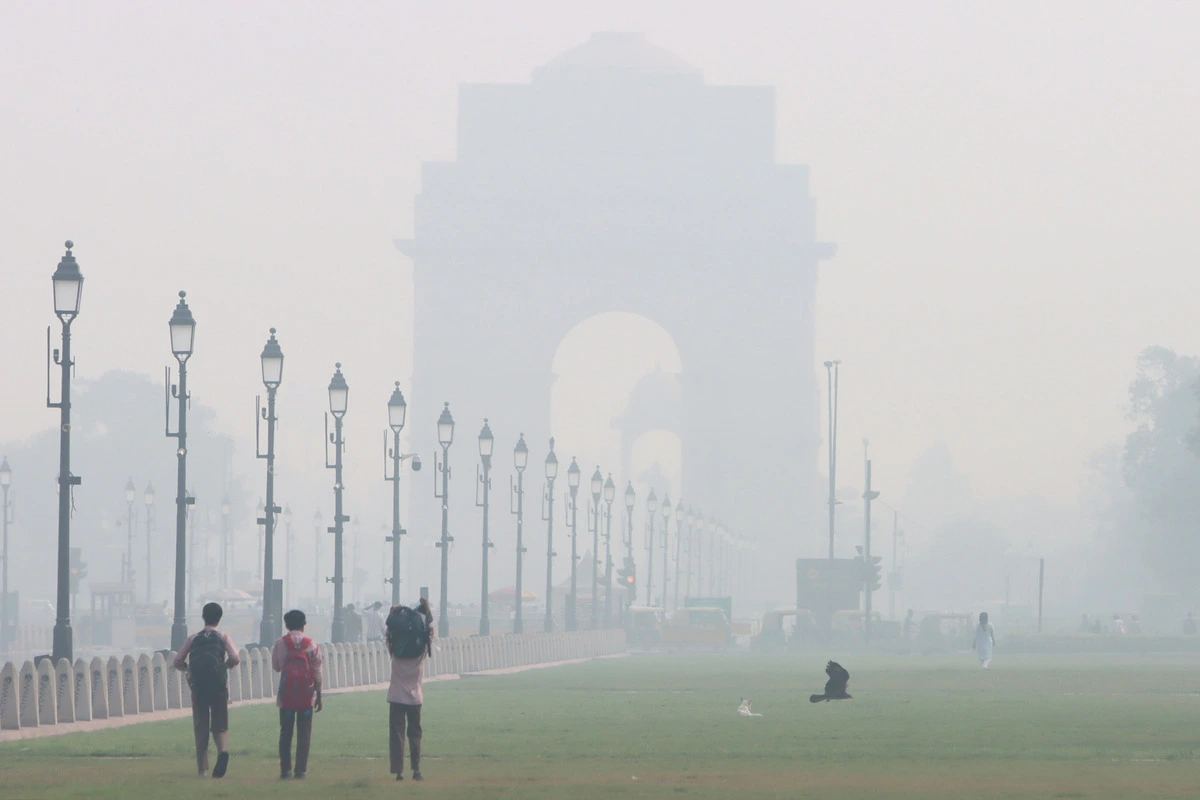
The national capital’s air quality remained in the ‘very poor’ category on Sunday morning, with the Air Quality Index (AQI) reading a hazardous 335. Despite a slight improvement from the previous day, pollution levels across the city continue to pose significant health risks.
Pollution Hotspots Show Marginal Improvement
While there was some marginal improvement in the AQI readings from Saturday, pollution hotspots in the city continue to show AQI levels far above safe limits. Areas such as Bawana, New Moti Bagh, Rohini, Vivek Vihar, and Wazirpur recorded ‘severe’ pollution levels on Saturday, with AQI readings exceeding 400. These areas still remain far from safe thresholds, which are categorized as follows:
– 0-50: Good
– 51-100: Satisfactory
– 101-200: Moderate
– 201-300: Poor
– 301-400: Very Poor
– 401-450: Severe
– 450 and above: Severe-Plus
Government Takes Action to Tackle Pollution
In response to the persistent pollution levels, the Commission for Air Quality Management (CAQM) has ramped up efforts to address air quality in Delhi-NCR. One of the key measures includes the removal of highly polluting end-of-life (EoL) vehicles. These vehicles, primarily petrol cars older than 15 years and diesel vehicles older than 10 years, continue to contribute to the city’s air pollution.
A meeting chaired by the CAQM Chairperson reviewed the progress of actions being implemented under the Graded Response Action Plan (GRAP), which targets air pollution hotspots across the city. During the meeting, officials emphasized the need for strict enforcement of regulations and immediate action against violators to ensure accountability. Delays in addressing pollution complaints were also highlighted as a barrier to the effective management of air quality.
Municipal Corporation to Review Parking Fees
As part of ongoing efforts to reduce vehicular emissions, the Municipal Corporation of Delhi (MCD) has been instructed to review the current parking fee structure in public spaces. The aim is to encourage greater use of public transportation and reduce the number of private vehicles on the road, which are major contributors to air pollution.
Current AQI Readings Across Delhi
Despite the increased efforts to mitigate pollution, the AQI across various localities in Delhi remains dangerously high. Some of the notable readings on Sunday morning included:
– Bawana: 383
– Rohini: 366
– Wazirpur: 366
– Anand Vihar: 351
– Ashok Vihar: 353
– Jahangirpuri: 370
– Mundka: 358
– Najafgarh: 341
– Nehru Nagar: 363
– Dwarka Sector 8: 343
– IGI Airport: 326
Other areas such as Alipur, Aya Nagar, Burari Crossing, and Mathura Road also recorded AQI levels well above the ‘very poor’ category, further underlining the ongoing pollution crisis facing the city.
Continued Vigilance Required
As Delhi grapples with its persistent air quality issues, authorities have called for continued vigilance and prompt action in reducing pollution levels. The CAQM stressed the importance of proactive measures and emphasized that without swift and coordinated actions, the air quality may continue to pose severe health risks to the city’s residents.
With the winter season approaching, which often exacerbates pollution levels, experts urge both government and citizens to take necessary steps to minimize exposure to harmful air pollutants.
To read more such news, download Bharat Express news apps


















